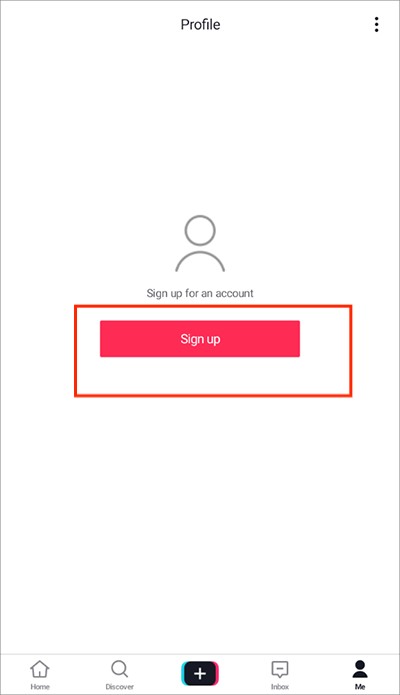LINQ to SQL语句之动态查询
时间:2010-10-09 来源:碧海蓝天—Java
动态查询
有这样一个场景:应用程序可能会提供一个用户界面,用户可以使用该用户界面指定一个或多个谓词来筛选数据。这种情况在编译时不知道查询的细节,动态查询将十分有用。
在LINQ中,Lambda表达式是许多标准查询运算符的基础,编译器创建lambda表达式以捕获基础查询方法(例如 Where、Select、Order By、Take While 以及其他方法)中定义的计算。表达式目录树用于针对数据源的结构化查询,这些数据源实现IQueryable<T>。例如,LINQ to SQL 提供程序实现 IQueryable<T>接口,用于查询关系数据存储。C#和Visual Basic编译器会针对此类数据源的查询编译为代码,该代码在运行时将生成一个表达式目录树。然后,查询提供程序可以遍历表达式目录树数据结构,并将其转换为适合于数据源的查询语言。
表达式目录树在LINQ中用于表示分配给类型为Expression<TDelegate>的变量的Lambda表达式。还可用于创建动态LINQ查询。
System.Linq.Expressions命名空间提供用于手动生成表达式目录树的API。Expression类包含创建特定类型的表达式目录树节点的静态工厂方法,例如,ParameterExpression(表示一个已命名的参数表达式)或 MethodCallExpression(表示一个方法调用)。编译器生成的表达式目录树的根始终在类型Expression<TDelegate>的节点中,其中TDelegate是包含至多五个输入参数的任何TDelegate委托;也就是说,其根节点是表示一个lambda表达式。
下面几个例子描述如何使用表达式目录树来创建动态LINQ查询。
1.Select
下面例子说明如何使用表达式树依据 IQueryable 数据源构造一个动态查询,查询出每个顾客的ContactName,并用GetCommand方法获取其生成SQL语句。
//依据IQueryable数据源构造一个查询
IQueryable<Customer> custs = db.Customers;
//组建一个表达式树来创建一个参数
ParameterExpression param =
Expression.Parameter(typeof(Customer), "c");
//组建表达式树:c.ContactName
Expression selector = Expression.Property(param,
typeof(Customer).GetProperty("ContactName"));
Expression pred = Expression.Lambda(selector, param);
//组建表达式树:Select(c=>c.ContactName)
Expression expr = Expression.Call(typeof(Queryable), "Select",
new Type[] { typeof(Customer), typeof(string) },
Expression.Constant(custs), pred);
//使用表达式树来生成动态查询
IQueryable<string> query = db.Customers.AsQueryable()
.Provider.CreateQuery<string>(expr);
//使用GetCommand方法获取SQL语句
System.Data.Common.DbCommand cmd = db.GetCommand(query);
Console.WriteLine(cmd.CommandText);生成的SQL语句为:
SELECT [t0].[ContactName] FROM [dbo].[Customers] AS [t0]2.Where
下面一个例子是“搭建”Where用法来动态查询城市在伦敦的顾客。
IQueryable<Customer> custs = db.Customers;
//创建一个参数c
ParameterExpression param =
Expression.Parameter(typeof(Customer), "c");
//c.City=="London"
Expression left = Expression.Property(param,
typeof(Customer).GetProperty("City"));
Expression right = Expression.Constant("London");
Expression filter = Expression.Equal(left, right);
Expression pred = Expression.Lambda(filter, param);
//Where(c=>c.City=="London")
Expression expr = Expression.Call(typeof(Queryable), "Where",
new Type[] { typeof(Customer) },
Expression.Constant(custs), pred);
//生成动态查询
IQueryable<Customer> query = db.Customers.AsQueryable()
.Provider.CreateQuery<Customer>(expr);生成的SQL语句为:
SELECT [t0].[CustomerID], [t0].[CompanyName], [t0].[ContactName],
[t0].[ContactTitle], [t0].[Address], [t0].[City], [t0].[Region],
[t0].[PostalCode], [t0].[Country], [t0].[Phone], [t0].[Fax]
FROM [dbo].[Customers] AS [t0] WHERE [t0].[City] = @p0
-- @p0: Input NVarChar (Size = 6; Prec = 0; Scale = 0) [London]3.OrderBy
本例既实现排序功能又实现了过滤功能。
IQueryable<Customer> custs = db.Customers;
//创建一个参数c
ParameterExpression param =
Expression.Parameter(typeof(Customer), "c");
//c.City=="London"
Expression left = Expression.Property(param,
typeof(Customer).GetProperty("City"));
Expression right = Expression.Constant("London");
Expression filter = Expression.Equal(left, right);
Expression pred = Expression.Lambda(filter, param);
//Where(c=>c.City=="London")
MethodCallExpression whereCallExpression = Expression.Call(
typeof(Queryable), "Where",
new Type[] { typeof(Customer) },
Expression.Constant(custs), pred);
//OrderBy(ContactName => ContactName)
MethodCallExpression orderByCallExpression = Expression.Call(
typeof(Queryable), "OrderBy",
new Type[] { typeof(Customer), typeof(string) },
whereCallExpression,
Expression.Lambda(Expression.Property
(param, "ContactName"), param));
//生成动态查询
IQueryable<Customer> query = db.Customers.AsQueryable()
.Provider.CreateQuery<Customer>(orderByCallExpression);下面一张截图显示了怎么动态生成动态查询的过程
生成的SQL语句为:
SELECT [t0].[CustomerID], [t0].[CompanyName], [t0].[ContactName],
[t0].[ContactTitle], [t0].[Address], [t0].[City], [t0].[Region],
[t0].[PostalCode], [t0].[Country], [t0].[Phone], [t0].[Fax]
FROM [dbo].[Customers] AS [t0] WHERE [t0].[City] = @p0
ORDER BY [t0].[ContactName]
-- @p0: Input NVarChar (Size = 6; Prec = 0; Scale = 0) [London]4.Union
下面的例子使用表达式树动态查询顾客和雇员同在的城市。
//e.City
IQueryable<Customer> custs = db.Customers;
ParameterExpression param1 =
Expression.Parameter(typeof(Customer), "e");
Expression left1 = Expression.Property(param1,
typeof(Customer).GetProperty("City"));
Expression pred1 = Expression.Lambda(left1, param1);
//c.City
IQueryable<Employee> employees = db.Employees;
ParameterExpression param2 =
Expression.Parameter(typeof(Employee), "c");
Expression left2 = Expression.Property(param2,
typeof(Employee).GetProperty("City"));
Expression pred2 = Expression.Lambda(left2, param2);
//Select(e=>e.City)
Expression expr1 = Expression.Call(typeof(Queryable), "Select",
new Type[] { typeof(Customer), typeof(string) },
Expression.Constant(custs), pred1);
//Select(c=>c.City)
Expression expr2 = Expression.Call(typeof(Queryable), "Select",
new Type[] { typeof(Employee), typeof(string) },
Expression.Constant(employees), pred2);
//生成动态查询
IQueryable<string> q1 = db.Customers.AsQueryable()
.Provider.CreateQuery<string>(expr1);
IQueryable<string> q2 = db.Employees.AsQueryable()
.Provider.CreateQuery<string>(expr2);
//并集
var q3 = q1.Union(q2);生成的SQL语句为:
SELECT [t2].[City]
FROM (
SELECT [t0].[City] FROM [dbo].[Customers] AS [t0]
UNION
SELECT [t1].[City] FROM [dbo].[Employees] AS [t1]
) AS [t2]ID标识
在前面这一点没有说到,在这里作为高级特性单独说下ID标识。
这个例子说明我们存储一条新的记录时候,ContactID作为主键标识,系统自动分配,标识种子为1,所以每次自动加一。
//ContactID是主键ID,插入一条数据,系统自动分配ID
Contact con = new Contact()
{
CompanyName = "New Era",
Phone = "(123)-456-7890"
};
db.Contacts.InsertOnSubmit(con);
db.SubmitChanges();










